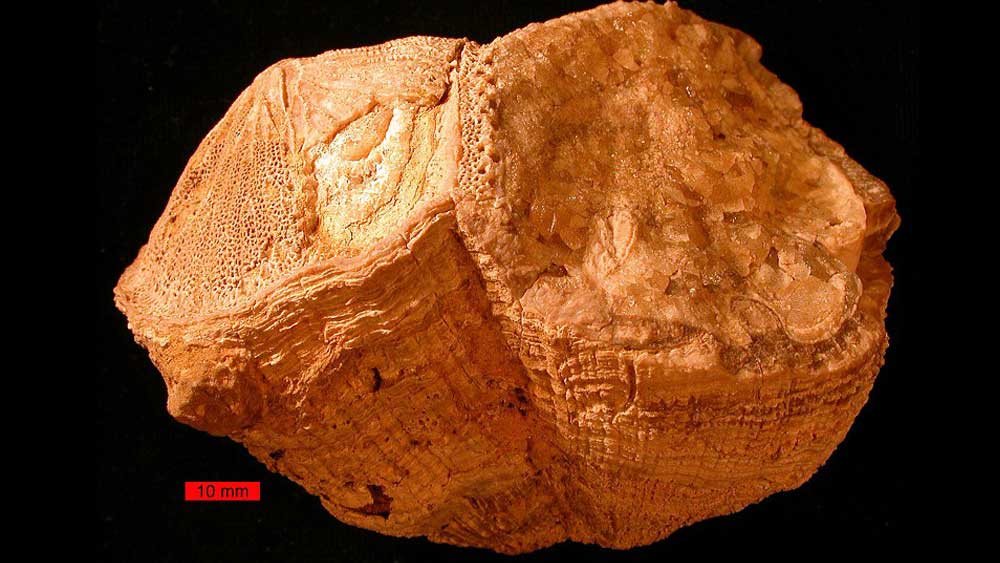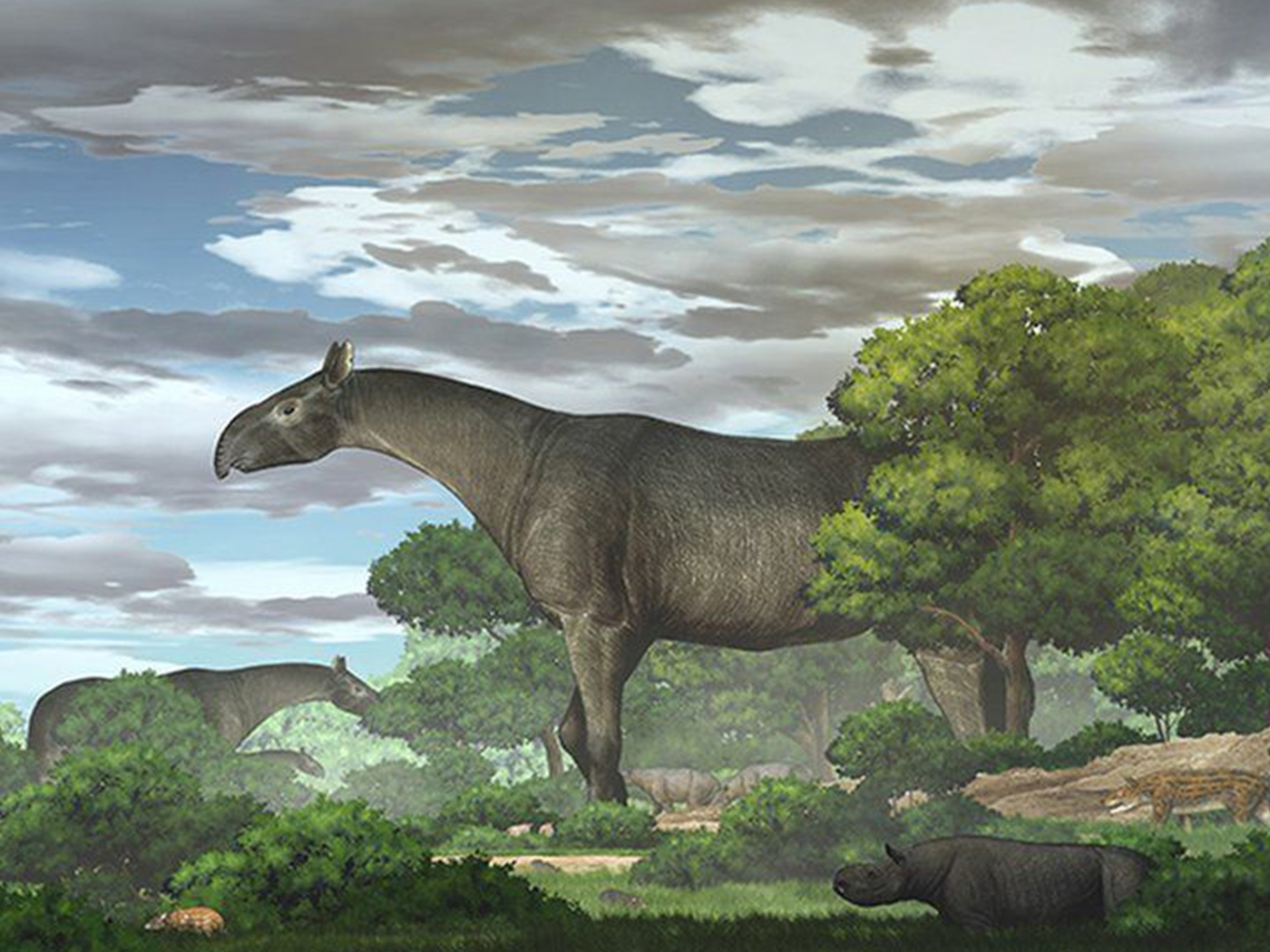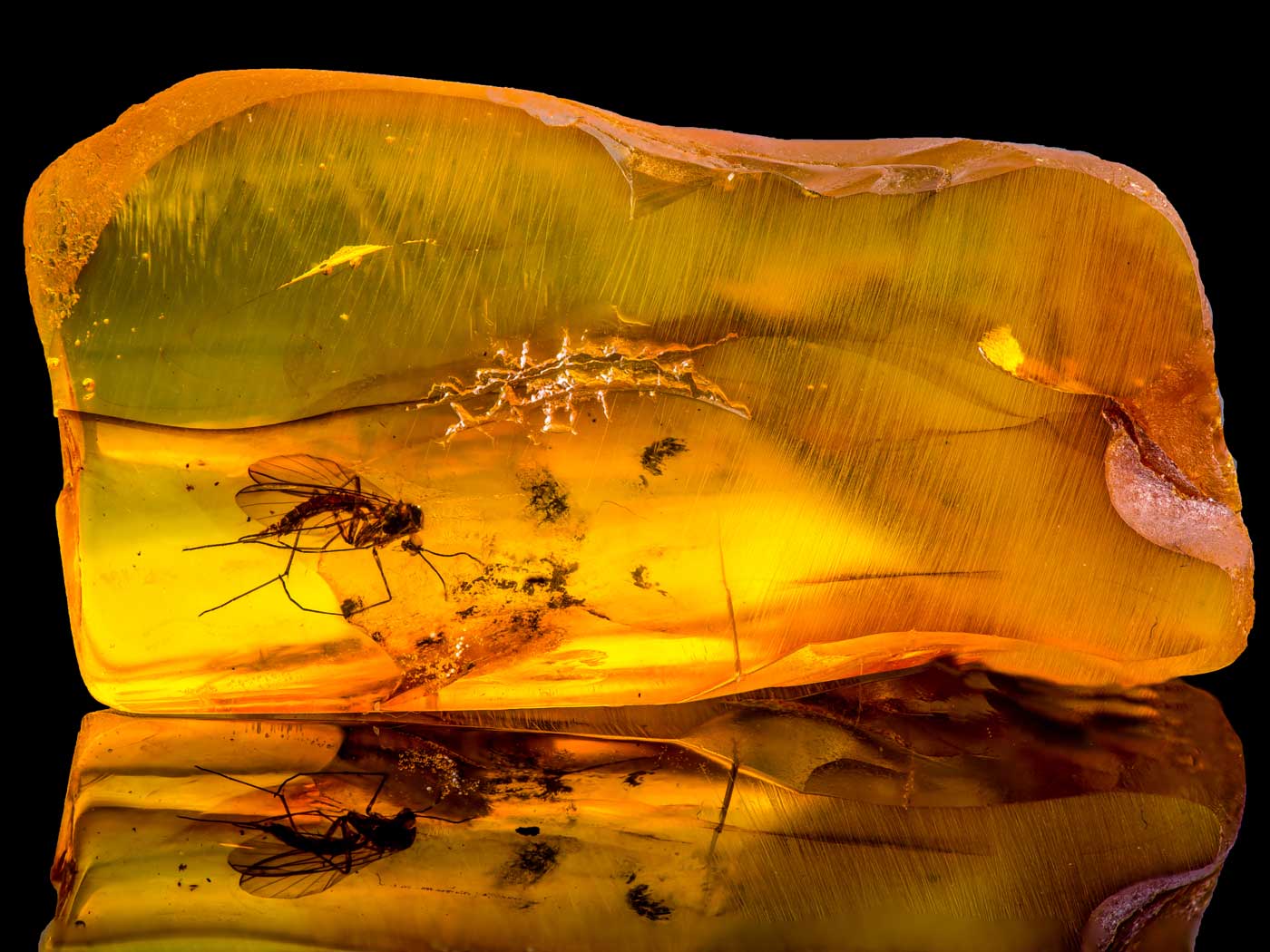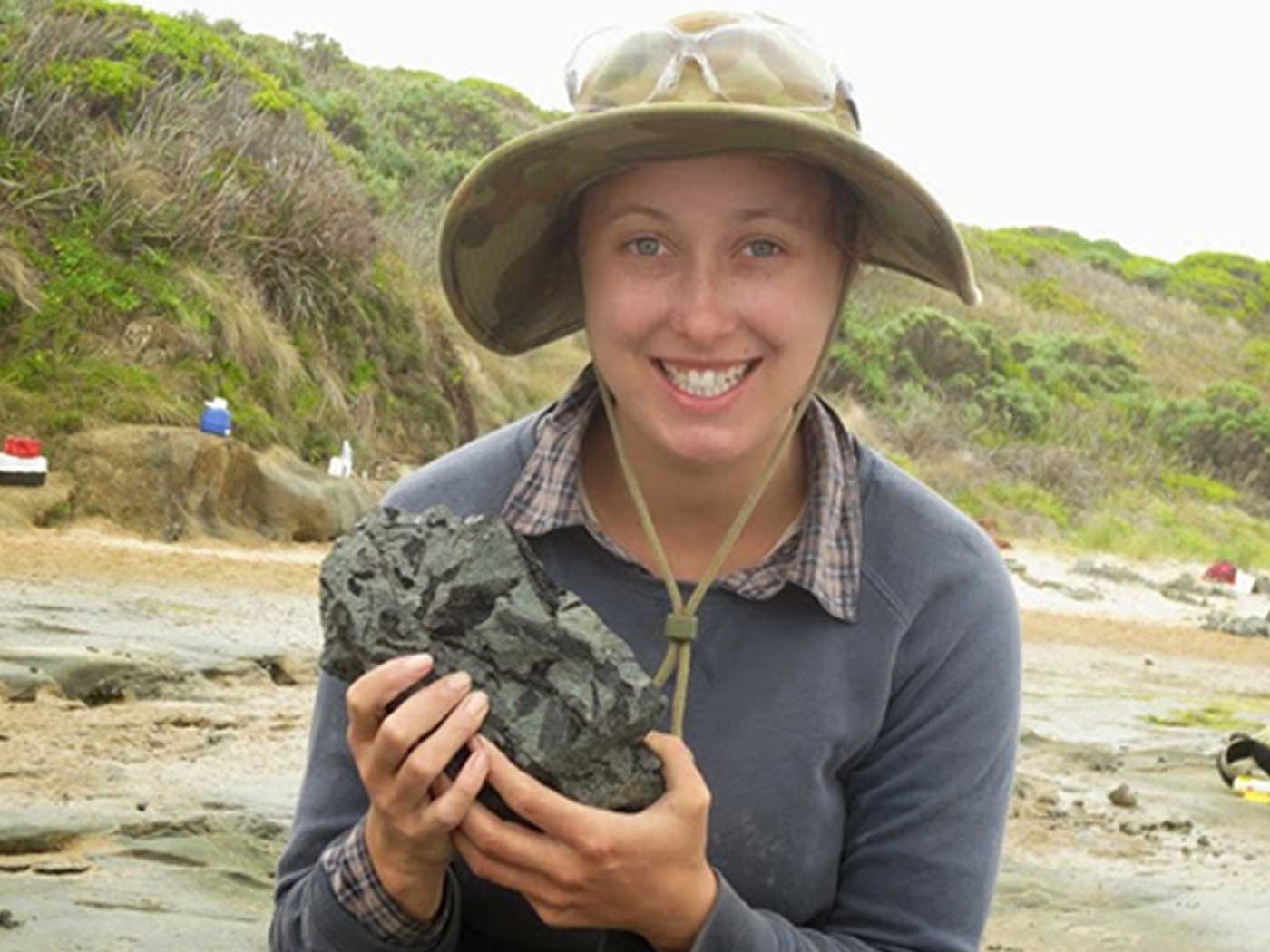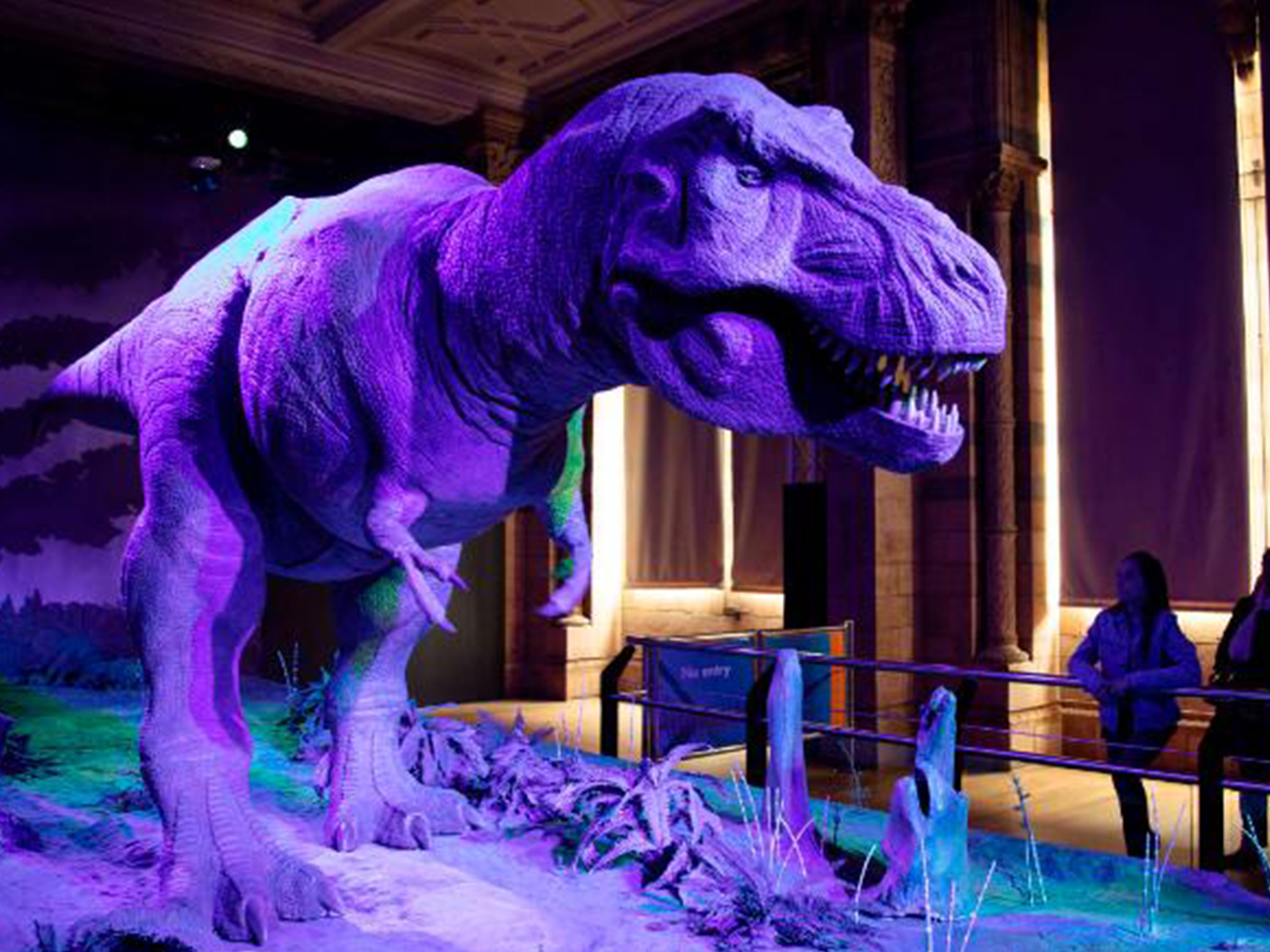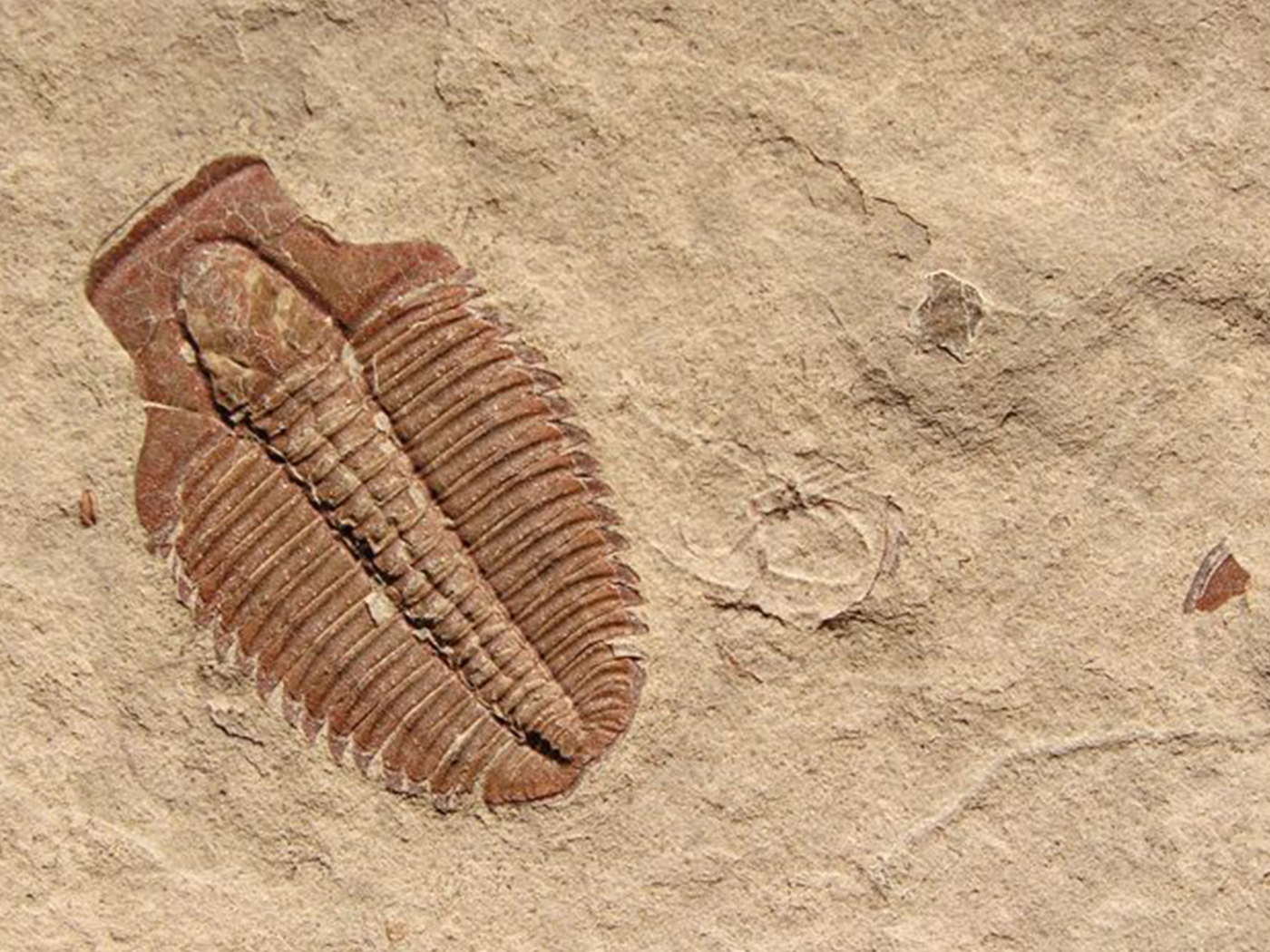Many secular scientists have thought the day was shorter in the past.2 And many creationists have speculated that the length of the day was slightly different in the past too, but possibly longer, suggesting that the pre-Flood year had only 360 days.
This latest study used a mollusk from Campanian (Upper Cretaceous) rocks in Oman, claimed to be about 80 million years old.1 The scientists analyzed a single fossil shell of the species Torreites sanchezi.
Previous studies have primarily relied on visual counting of perceived daily and annual growth lines. However, the current study used a combination of visual counting, a mathematical averaging and various trace chemical analyses on the nanometer scale. Recent advances in technology enabled the research team to sample trace element ratios even at the high resolution of 10 nanometers.1 Senior author Niels de Winter told Gizmodo,
Previous estimates were based on counting daily laminae [growth layers] similar to the ones we did chemical analyses on. This [previous] counting yielded roughly the same number of days per year, but with different countings yielding differences up to 10 days due to human error and the difficulty in recognizing daily layers by eye.2
The Belgium team determined that identifiable daily patterns in the rudist shell repeated on the order of 40 nanometers. This was interpreted as the daily growth “ring” for the mollusk. They also claimed to have resolved seasonal and annual markings.1 The secular scientists assumed that these repeating cycles were daily cycles of light intensity (day and night).
De Winter explained:
Trees deposit a layer of wood every year, and you can see these layers when you cut a slice out of a tree. By counting the layers from the outside towards the inside of the tree stump, one can estimate the tree’s age. In a similar way, we could count the days and years in Torreites sanchezi by counting the layers. Our chemical analyses of the layers allowed us to do this with great precision and take away the error that occurs when counting these layers by eye through a microscope.2
However, many trees can and do form more than one tree ring per year.3 Is it possible some of these claimed daily cycles could have also formed more often too? But let’s examine their results. How compelling are they?
When the geochemists compiled all the data from all three methods, they determined that 372 laminae (daily growth rings) were deposited per year with an uncertainty of 8.4 days.1 In fact, the chemical data itself, which they believe to be most accurate, gave 373 laminae per year with an error of 12 laminae per year either way.1 That means the number of days in the Late Cretaceous year could have been anywhere between 361 to 385.
The scientists also used their newly derived data in combination with previous tidal models to estimate the Earth-Moon distance for the Late Cretaceous. They calculated the moon was only about 237,985 miles away from Earth in the Cretaceous.1 Today, the moon is about 238,900 miles from Earth. However, this is not totally unexpected.
I did a few “back of the envelope” calculations to help us understand all of this. Let’s assume the Late Cretaceous rudist fossil that was studied is really 80 million years old, and the moon has receded 915 miles since that time. This gives us an average rate of recession since the Cretaceous of only 1.8 cm/year. This is less than half today’s rate.2
As stated by de Winter,
Indeed, Earth’s spin is slowing down, and the days are getting longer, owing to the tidal effects exerted by our natural satellite. At the same time, the Moon is steadily drifting away to the tune of 3.8 centimeters (1.5 inches) per year. At this rate, the Moon should’ve been inside the Earth some 1.4 billion years ago, which obviously is not possible. The Moon is considerably older than this timeframe, having formed from a (likely) collision during Earth’s infancy some 4 billion years ago.2
Regardless of which recession rate is correct, the conundrum of the moon’s rapid recession is still a lingering problem for uniformitarian scientists. It doesn’t fit the evolutionary assumption that the Earth is 4.55 billion years old. In contrast, the moon recession rate is not a problem for young earth creationists who hold to a 6,000-year age of the Earth and moon.
So, how long was the “year” in the past? Most Flood geologists believe Cretaceous rocks and fossils were deposited in the Flood year, possibly at the highest water level of the global Flood.4 And the length of the day was possibly slightly different prior to the Flood (about 4400 years ago) and/or possibly different at the onset of Creation. A lot of rapid plate tectonic activity may have changed the earth’s rotation rate slightly. But, the length of the year was likely not too different from today, maybe falling somewhere in the range of 360 to 370 days per year. And unsurprisingly, this is pretty much the same range found in the present study.2 If only secular scientists could solve that pesky moon recession problem.
Stage image: Picture of Torreites sanchezi, a rudist bivalve.
Stage image credit: AGU. Copyright © 2020. Adapted for use in accordance with federal copyright (fair use doctrine) law. Usage by ICR does not imply endorsement of copyright holders.
References
1. de Winter, N.J., et al. 2020. Subdaily-scale chemical variability in a Torreites sanchezi rudist shell: Implications for rudist paleobiology and the Cretaceous day-night cycle. Paleoceanography and Paleoclimatology. 35, e2019PA003723.
2. Dvorsky, G. 2020. Days on Earth used to be 30 minutes shorter, ancient shell suggests. Gizmodo. Published on gizmodo.com March 9, 2020, accessed April 3, 2020.
3. Glock, W.S., et al. 1960. Classification and Multiplicity of Growth Patterns in the Branches of Trees. Smithsonian Miscellaneous Collections. 140 (1): 1–292.
4. Clarey, T. 2020. Carved in Stone. Dallas, TX: Institute for Creation Research, 282-311.
*Dr. Clarey is Research Associate at the Institute for Creation Research and earned his doctorate in geology from Western Michigan University.




